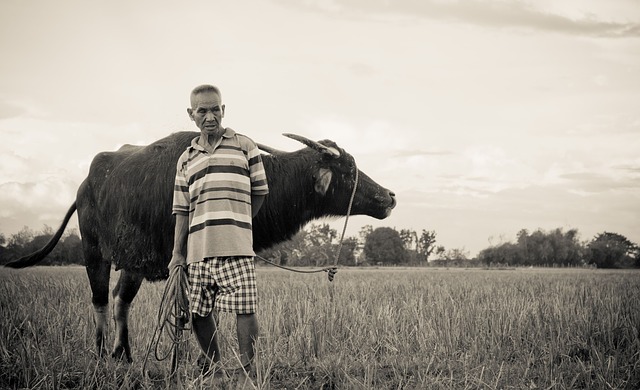February 22, 2018
Review of The Yellow Bar
The Yellow Bar: The Basics
The Yellow Bar, by John Falch, is a novel of historical fiction describing the Japanese invasion of the Philippines, during WW2. The reader follows the story mostly from the perspective of Pepot, the youngest son of a rural family who has to deal with the repercussions of the military occupation. Obviously enough, some events and personal stories are fictionalized, but the general context is accurate.
The plot starts a few years before the invasion, describing how Pepot’s family managed to escape poverty by selling food and drinks to people passing by their house. Then it proceeds to show how their “rural middle class” (in lieu of a better word) dream shattered. The invaders occupied not only their country but also their house, forcing them to become servants. It’s a story of surviving, waiting, and hoping.

Genre, Plot, and Narrative
Generally speaking, the narrative proceeds in a natural way. Its structure is normal. This is another way to say that it’s neither exceptionally original, yet nor a problem. Sometimes normal is good. In terms of its genre – that is, historical fiction – The Yellow Bar offers a good, close look at the context of the Japanese invasion. Readers should remember that the perspective of the story is that of Pepot, which means that there aren’t any descriptions of battles or tactics – except only those available to Pepot, for instance through his relatives who have joined the guerrillas.
It is interesting to note, however, that the novel does include descriptions of scenes and characters outside Pepot’s direct knowledge. In other words, there is a certain narrative intermixing going on, with some chapters following Pepot’s first-person experiencing, whereas others describe events and characters elsewhere. Those latter chapters are essentially offered in 3rd-person narration, but Pepot still might interject a thought or background information. It does come off as a bit awkward, but it also allows for some funny commentary.
Some Words on Narrative Evolution
Another interesting element to note was the way the narrative evolves in the final third. Up until then, a certain sense of levity pervades the story. This is consistent with the locals’ life philosophy: They learn how to bend, as Pepot explains. As a result, war suffering is limited to some mild scenes of slapping or humiliation. Indeed, until the final third, the novel seems lacking in terms of presenting the realities of military occupation. However, things change drastically after that. A bit too drastically.
Indeed, as if the author wanted to point out the difference – reflecting real history and the way the Japanese attitudes toward the locals changed – the final part of the novel is much more grim. This is all good and fine, but certain elements come off as a bit too sensationalist: Tragedies “just happen” to characters, who “just happen” to pass by a certain point at a certain time. To an extent it again reflects real history and the senselessness of evil. Still, in purely narrative terms, it comes off as a bit too random.
The ending itself is very good (always speaking in narrative terms). It approximates what I refer to as surprising-but-inevitable in my article on narrative endings, leaving the reader with a good taste. The last words of the novel are spoken by one of its most interesting characters, which was something I personally found fitting.
Characters
By far the strongest aspect of the novel. There is a large number of characters marching through the pages of the book, each with their individual mannerisms, thoughts, and motives. Virtually everyone comes off as realistic, despite the perhaps disappointing lack of extensive look into anyone of them. To be fair, this is probably a result of the genre. The author apparently chose to focus on the population as a whole rather on specific stories.
It works, however, one can’t help but feel a sense of opportunity having slipped by. It would’ve been interesting to have a closer look at some characters’ inner thoughts, desires, or background. The author has instead relied on dialogue to convey his characters’ narrative essence. This generally works well, with a couple of asterisks: the excessive usage of CAPITAL LETTERS to indicate anger or excitement; some inconsistencies in terms of English-language usage.
About this latter aspect, what happens is that the author has deliberately had some Japanese or Chinese characters speak broken English, whereas all Filipinos seem to be speaking flawlessly. It’s quite understandable that this occurs, yet it’s also noticeable.
The Yellow Bar: General Impression
Overall, my impression of The Yellow Bar has been very positive. It’s not perfect, but it’s a very well written text of historical fiction. It describes events and settings many people might be unfamiliar with, which is what literature should be about. The plot moves along naturally, and the reader feels engaged in what happens to the characters at all points. Its flaws are few and not glaring. Perhaps a sharper focus on some of the interesting characters would have offered added value, but the novel doesn’t suffer from its lack.
I would’ve also liked to see somewhat more abstract thinking. This is war, after all. Some few precious scenes here and there are gripping in such descriptions, but they are very few and far apart. The chapter describing a kamikaze pilot’s thought process on the morning of his final flight is simply brilliant – including the words ending the chapter – and should’ve functioned as a blueprint for the entire novel: less direct narrative exposition (and dialogue), and more descriptions of affect: emotions, thoughts, and feelings.
Still, despite the aforementioned observations, The Yellow Bar remains an excellent choice for anyone interested in historical fiction, the Philippines, or just a good story about family, survival, and hope.
You can read a free preview and buy The Yellow Bar on Amazon.
Comments are closed for posts older than 90 days